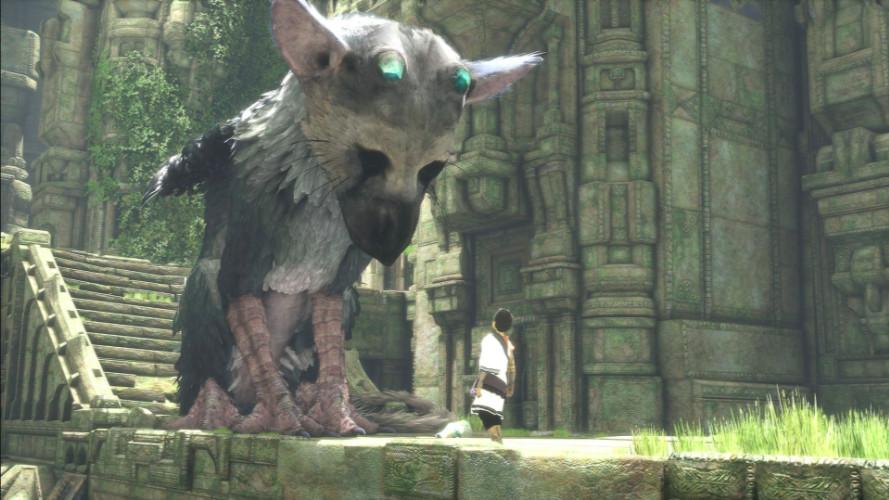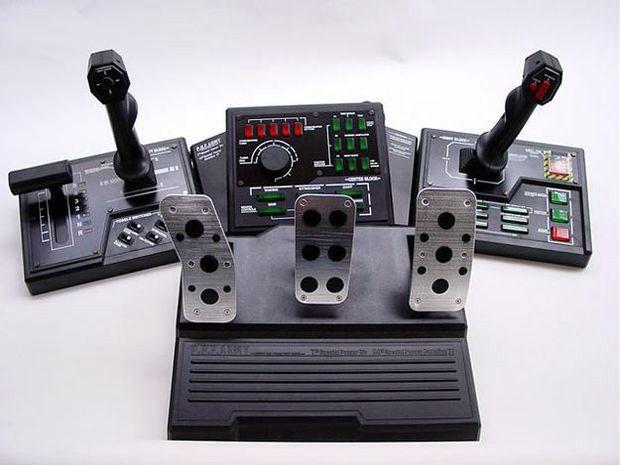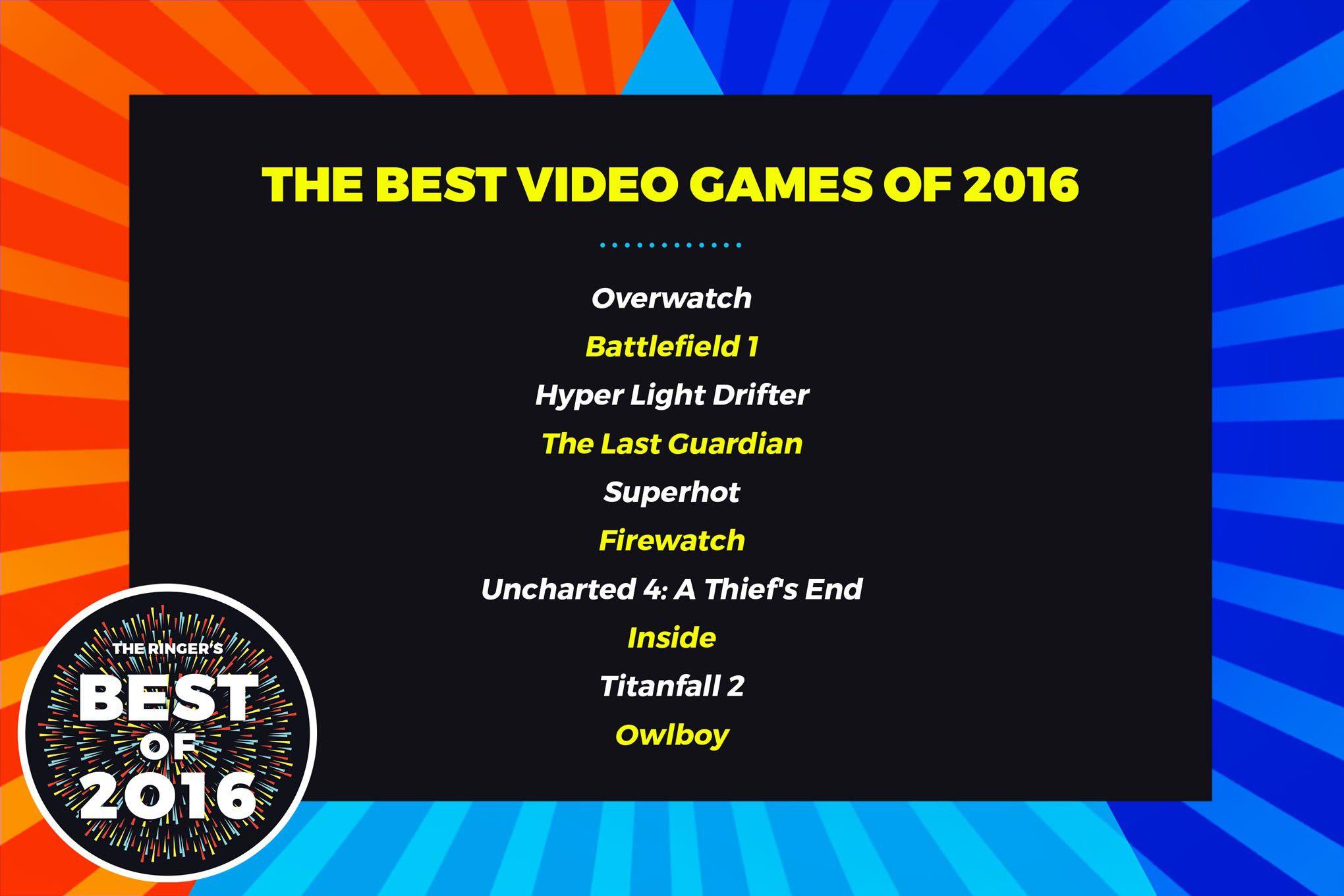Fumito Ueda’s The Last Guardian — the follow-up to his twin masterpieces Ico and Shadow of the Colossus — is a strange, spare, and beautiful game nearly a decade in the making. Development began in 2007. The first gameplay trailer was unveiled in 2009 with a planned release date (exclusively on PlayStation 3) for the 2011 holidays. Ueda is, inarguably, one of the medium’s few true auteurs, famed for his perfectionism. His unwillingness to compromise on his game’s exacting technical requirements pushed the release date of The Last Guardian to 2012, then 2013, all the way to its eventual release date, this week, on the PlayStation 4. "I can’t step back and enjoy it just yet," said Ueda in an interview provided to The Ringer by the game’s publisher, SIE Japan Studio, of finally completing the game. "It doesn’t seem real to me."
Last Guardian tells the story of a young boy who discovers a wounded mystical beast named Trico. They become companions. Together, they solve various puzzles on a journey of discovery through a maze of mysterious mountainous ruins. The game is confounding and transcendent. Ben Lindbergh and I traded emails to discuss.
Jason Concepcion: Ben! I don’t know that I’ve ever played anything quite like The Last Guardian since, well, Fumito Ueda’s sophomore game, 2005’s Shadow of the Colossus. In many ways, Guardian feels like the moral and philosophical obverse of that game. In Colossus, the protagonist, Wander, must kill 16 giant creatures — the colossi — in order to restore the life force of a girl named Mono. Killing each colossus is arduous; after finding one (no small feat), killing it could take up to an hour or more of button mashing and puzzle solving. The colossi are gentle giants and killing them feels at once satisfying and unambiguously wrong. Colossus was like a meditation on selfishness and the destruction of nature; it’s a game about regret. Guardian is unmistakably about developing a relationship with nature and the power of kindness.

The design of Trico is notable. Trico has the face, body, and personality of a dog; the feathers, feet, and flightless wings of a chicken; a pair of horns (shaved down by forces unknown); and a tail like a rat. Trico, in other words, is a combination of animals that humans consider friends, an animal we eat, and animal we revile, wildlife writ large. In opposition to Colossus, the player rescues a beast — who in turns rescues the player — instead of murdering one.
There are moments of real genius in Guardian beneath the terrible camera physics and wonky controls. I loved it. But it isn’t for everyone.
Ben Lindbergh: I often found it frustrating, but the good far outweighed the bad. Guardian is pretty plainly an amalgam of Ico’s wordless bond between two castoffs and Colossus’s, well, colossi. In theory, blending the groundbreaking elements of two great games could create a third that’s the best of the bunch. In practice, I’m not sure that’s the case; there’s a bit of been-there-done-that to Ueda’s latest opus, which looks and plays a lot like both of its predecessors. Since it’s been more than a decade since we’ve been there or done that, though, most of Guardian still feels fresh. And despite Ueda’s long layoff, I don’t think any other developer has outdone him in eliciting real emotion while displaying a signature aesthetic style.
We’ll get to the genius, but first, the frustration. Remember Steel Battalion, the Xbox mech sim that required a 40-button controller that looked like this?

At times, controlling Guardian felt equally unintuitive, even though there are only a few actions available to its unnamed protagonist. Given that game criticism in 2016 tries to delve beyond the superficial — I’m amazed that we’ve gotten this far without either of us saying "ludonarrative" — it feels unsophisticated to start off by saying "I didn’t care for the controls." At a certain point, though, awkward core mechanics can interfere with the artistry. I’m not a throw-the-controller-type person, but Guardian almost made me do it.
About 10 seconds into a game I’ve looked forward to for years, I had to stop playing, open the options menu, and search for a setting that might make the camera stop feeling so foreign. Inverting the axis didn’t do it, and sadly, "Just Let Me See Stuff: Y/N" wasn’t an option. A combination of input lag and imprecision made it feel like the game was fighting me for the dozen or so hours it took to finish. (I’m typing this sentence with a blistered thumb.)
In outdoor areas, where the art and architecture (if not the frame rate) really shine, the camera isn’t as much of a hindrance. In the more confined indoor environments (which make up the bulk of the game), Trico really gets in the way. Sometimes, the camera gets so stuck that the game just gives up and goes dark for a split second or displays some jumble of geometry that makes me feel like Westworld’s Dolores looking at a photo of William’s fiancée.
Why does the interface seem so slapdash? It could be because games are the cruelest popular medium for artists who work at a deliberate pace. If a highly anticipated novel comes out after a lengthy delay, no one faults the finished product because English started supporting higher-resolution sentences while we were waiting for the book to be released. But video games are too new and too technology dependent for the goalposts to stand still during any game’s development. Close up, Guardian sometimes looks like a PS3 game, which makes sense since it began its development as a PS2 game. It’s plausible that the controls are also a relic of a more primitive time. Colossus wasn’t always a joy to control — remember trying to ride Agro? — but maybe we just have higher standards than we did a decade ago.
On the other hand, with an auteur like Ueda, it’s tempting to ascribe an artistic intention to flaws that we would normally dismiss as sloppy mistakes. When a game is in development for as long as Guardian was, maybe it’s safe to assume that nothing is in there by accident. So can you make a case that the controls and camera are semi-broken by design in service of the story?
Jason: I need to describe the way Guardian’s controls are "bad," because it’s so crucial to the experience of the game. There is, as you say, a feeling of imprecision to the way the left stick moves the boy through the world. In addition to the definite lag between nudging the stick and the boy moving, there’s so much in the dreamlike detail of the environment for him to get hung up on.
Then there’s the seemingly illogical way the buttons correspond to the boy’s actions. This, to me, is the tell that the controls (I’ll get to the camera in a second) were intentionally designed to feel unnatural. For example: In Guardian, you press the circle button to wield a mirrored shield and while holding down the button, use the left stick to aim a beam of light. In almost any other game, wielding an item this way would be tied to the left trigger while the right stick would control the aiming.
Why do this? The most obvious reason is that because the puzzles that the player must solve are so simple that the game needs some way to slow your progress. But Ueda doesn’t just make the game’s minimalist puzzles frustrating to engage with, he makes them hard to find. Superfluous "game-isms" have been ruthlessly removed or added to the game environments in deceptive ways. Players constantly encounter design cues that have been common since Super Mario Bros.— glowing doorways, locked gates, footpaths, climbable ledges — which invariably lead nowhere. Often, the way to the next level is right in front of you, or literally under Trico’s nose — only, it looks just like everything else, lit in the same perfect summer-afternoon light. The camera conspires with the controls because it is constantly focusing on things the player doesn’t intend to look at.
The deeper reason for crafting the game this way is the clunky controls enhance the feeling that you are playing as a child.
These design choices steer the player into thinking and feeling in ways that are foreign in the context of a platformer game but native to real life. When the mechanics, art, and player frustration come together just so, the results are wondrous. About midway through the game, after a battle, Trico becomes agitated, bucking and growling, shaken by the violence he has just been involved in. The narration told me I needed to find a way to calm him. Meanwhile, the camera, of its own volition, panned down a hallway which I had yet to investigate. Traversing it led to other areas. I explored for several minutes, finding nothing useful. I backtracked, explored again, finally returning to Trico. In the end, the answer was simply: pet him. Of course that would be the answer with a real life companion … but in a video game? It was a transcendent moment for me — the simplest answer to a simple puzzle, arrived at in an honest way that felt totally anti-game.
That said, the camera is, at times, truly broken. I’m just not sure it’s possible to use the camera as an emotional braking mechanism in the way I described without it occasionally being literally the worst. Maybe Ueda just decided he couldn’t generate the feeling he wanted without also creating immense and, at times, game-breaking frustration.
Ben: On the topic of puzzles: As a friend of mine sometimes says, "strong agree." It’s impressive that Ueda’s puzzles keep hitting the sweet spot when he gives himself so little to work with; as usual, he populates his levels with very few enemies and even fewer items, but he does more with those meager materials than most developers do with a multi-menu inventory. I got stuck several times, but with a one or two exceptions, my level of desperation never crossed the line from "satisfying challenge" to "try to find a walkthrough."
In a similar vein, I love that the game’s story, like those of Ueda’s earlier classics, leaves so much unexplained. Who built and subsequently abandoned these soaring, disintegrating ruins? Why is Trico terrified of an eye-like symbol emblazoned on certain obstacles? What do the on-screen symbols that I’m supposed to zap to load from the last save point signify?
Maybe the answers are already on r/thelastguardian, but I’m content not to know. Ueda’s chimerical worlds are best absorbed without worrying about whys. At no point did I wonder, "Where am I going?" or "What is my goal?" even though the game rarely makes either of the answers much clearer than "Onward and upward" and "Don’t fall off that ledge."
While nothing can redeem the uncontrollable camera, I’ll accept what you’re saying about the union between Guardian’s themes and the less-than-responsive controls. A couple of hours into the game, you gain indirect (emphasis on the "in") control over the convincingly animated Trico, who, in theory, mimics your avatar’s moves. In my experience, this happened only about a third of the time. Then again, maybe that’s the best one could expect from a wildly independent dog/bird/cat creature; as the owner of an only occasionally obedient dachshund, I thought Trico’s recalcitrance rang true. (My fiancée and I debated how our puppy would treat us if she turned Trico-sized. Our decision: as dinner.)
If Trico were a seamless extension of the player’s will, he might not feel like such a full-fledged companion.
In the first few minutes of Guardian, you find food for Trico and pull spears out of his side, actions you’ll repeat throughout the game. Between that, the wonky controls, and the constant need to clear paths wide enough for him to fit through, you’ll be tending to Trico for hours (although he frequently repays the favor by stomping on enemies and carrying you across gaps). Maybe all of that effort on Trico’s behalf is what makes him so sympathetic. It’s like that line from The Little Prince, "It’s the time you spent on your rose that makes your rose so important." Or maybe it’s more like that other line from The Little Prince: "You become responsible, forever, for what you have tamed." Either way, I don’t think I’ve ever become so attached to a non-humanoid NPC; we won’t spoil what happens to Trico, but because I cared, I spent most of the game dreading a sad ending.
Jason: Strong agree.

Ben and Jason’s 10 Favorite Games of 2016

Overwatch (Blizzard)
Jason: The most addictive multiplayer shooter of the year and a joyously diverse take on the genre, delivered in Blizzard’s hopeful house style. Sidebar: Don’t play Hanzo in competitive mode unless you know what you’re doing (you don’t).
‘Firewatch’ (Campo Santo)
Ben: We’re so in the tank for Firewatch that we just did podcasts with both its writer and its designer.
Go get the game; you’ll finish it in four hours but you’ll never stop thinking about its dialogue-driven story, stylized art, and peaceful yet ominous setting (Shoshone National Forest, 1989).
Jason: It’s a perfect example of how video games can deliver story in ways that other mediums can’t. It also has the most seamless tutorial and the most unskippable, thematically sublime end credits sequence in video game history.
‘Uncharted 4: A Thief’s End’ (Naughty Dog)
Ben: Jason and I talked about Uncharted 4 shortly after it came out; if you want to hear our raves about the final installment of the series starring treasure hunter/scoundrel/American Ninja Warrior–wannabe Nathan Drake, you can listen here.
Uncharted’s set pieces and polish have been gaming’s greatest answer to the Hollywood blockbuster since the franchise’s inception. Like an older but still acrobatic Drake dropping from a ridiculous height, Naughty Dog stuck his last landing.
‘The Last Guardian’ (Team ICO)
Jason: Fumito Ueda understands how to leverage the spare iconography of childhood memory in ways that stir the heart and the soul better than anyone else in games.
‘Inside’ (Playdead)
Ben: Playdead’s puzzle-platformer follow-up to Limbo tells its haunting, dystopian story with Guardian–like economy. Its ending is its most mind-bending puzzle of all.
‘Superhot’ (SUPERHOT Team)
Jason: A deceptively deep meta-commentary on violent games which contains the first truly new FPS mechanic in years.
‘Titanfall 2’ (Respawn)
Ben: Considering the first Titanfall had no single-player campaign, I wasn’t expecting its sequel to have my favorite from any shooter this year. Full of inventive mechanics and buoyed by one of the year’s best AI sidekicks not named Trico, the second game in the multiplayer-oriented franchise is worth playing for the solo missions alone.
‘Hyper Light Drifter’ (Heart Machine)
Jason: A colorful, mysterious, and at times overly challenging sci-fi callback to the 16-bit adventure games of the SNES era. Low-res never looked so good.
‘Owlboy’ (D-Pad Studio)
Ben: I’m playing Owlboy between holiday blockbusters, so I’m extrapolating from what I’ve seen so far. A retro, 2D platformer inspired by games from the SNES era, Owlboy was in development for almost as long as The Last Guardian and Final Fantasy XV with a fraction of the hype. I’m no sucker for the 16-bit look, but Owlboy has the looks, the sounds, and the story to stack up to the best of a bygone era.
(Wait, Rocket League isn’t eligible again, is it? But it came out for Xbox this year! Fiiine, fine.)
‘Battlefield 1’ (EA Dice)
Jason: Far and away, the best game in the series. Unflinching and savage. The multiplayer maps are works of art.
